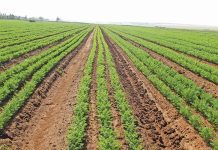And as the world economy splutters back to life, there will be higher levels of global trade.Prof André Jooste, senior research manager at the Market and Economic Research Centre, said, “The upward trend on the Baltic Dry Index indicates that demand to move products on deep sea carriers is increasing.”
A recovery in major economies, and in China in particular, will lead to an increased demand for food, he added. “The strongest growth will come from pork and poultry, which are major users of grain. One can expect continued movement or growth in grains going toward animal feed.” In the medium term, higher demand for meat internationally means meat prices stay relatively strong on the local market. “A major concern in South Africa is the high unemployment rate. It means we haven’t reached full potential in terms of consumption. But growth in the middle class has stimulated growth in high-income commodities like meat and it’ll stay strong in the next year.”
Grain price increases will be fuelled by tighter stocks and strong imperatives internationally to drive biofuel industry development. “Brazil isn’t of particular concern as they use sugarcane as biofuel stock, but countries like the US use grains, which could put upward pressure on grain prices internationally,” said Prof Jooste.
Rand Merchant Bank (RMB) currency strategist John Cairns said the global economic backdrop remained uninspiring by the end of 2010. “Rates of economic expansion in the core economies have slowed and the outlook is for continued sub-trend growth at 2% or lower in 2011.” RMB forecasts that interest rates should remain on hold through 2011, although there’s an outside chance of another rate cut. A “stronger-for-longer” rand could also be a feature of 2011. “RMB’s core assumption is that the US dollar weakness will eventually dissipate and the euro will face pressure,” said Cairns.
After trading at around US/barrel to US/barrel (about R477/barrel to R511/ barrel) for most of 2010, the price of Brent crude oil broke out of the range in October, trading above US/barrel (about R545/barrel) for most of November.
“Investment demand for commodities, including oil, has rose steadily. RMB’s view for a weaker oil price (of around US/ barrel – about R518/ barrel) in 2011 is being challenged at these current highs. Upside risks remain and any further deterioration in the US dollar may result in the oil price testing higher levels to even US0/ barrel (about R682/barrel),” said Cairns.Higher oil prices mean higher fertiliser prices, which, coupled with higher electricity prices, will put more pressure on farmers’ margins in 2011. There’s a high probability that higher administered price increases will find their way to consumer end-prices, said Prof Jooste.








